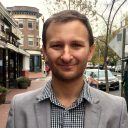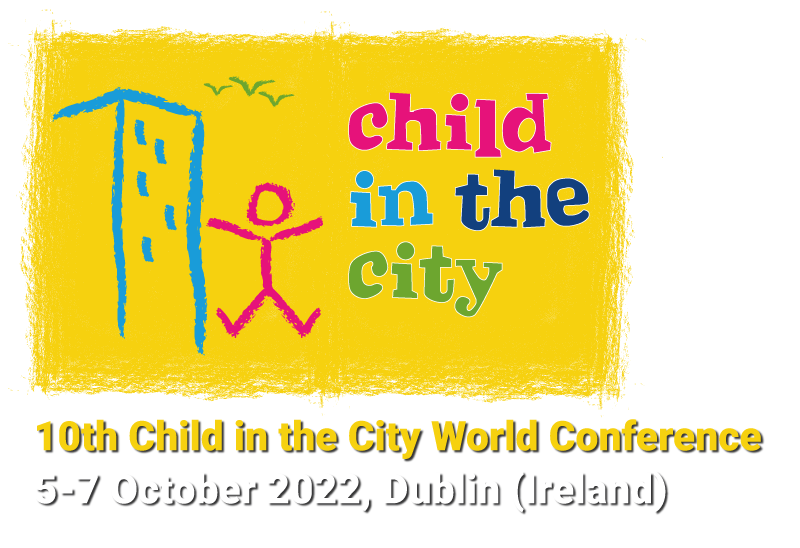Parallel session 2.6: Connecting urban parenting to urban planning
Wednesday, 5th October 14.00 – 15.30, Syndicate Room E207 in Bedford Tower at Dublin Castle
 Committed And ‘Won Over’ Parents in Vancouver’s Dense Family-Oriented Urbanism
Committed And ‘Won Over’ Parents in Vancouver’s Dense Family-Oriented Urbanism
Louis Thomas, Assistant Professor of the Social Sciences at Bard Early College in Washington, DC.
Dr. Thomas will present on his research concerning the experiences of parents in densifying neighborhoods in Vancouver, British Columbia, Canada, and Arlington, Virginia, USA, in relation to the various urbanization policies in each municipality.
 Spaces for Raising Children in Cities
Spaces for Raising Children in Cities
Aminah Ricks, NACTO, Senior Program Manager, Capacity Building, NYC & Italy
En route from home to school or the playground, every city should offer safe places for children and their families to walk, ride and roam. By 2050, the majority of city residents worldwide will be under the age of 18, therefore the time is now to revisit how we design and plan our communities with children in mind. This presentation will include ideas and support for transforming urban contexts into child friendly spaces from New York City to Italy.
 “How rural immigrant families deteriorating life skills of the children living in the street: A literature review approach”
“How rural immigrant families deteriorating life skills of the children living in the street: A literature review approach”
Suha Shidratul Moontaha, Assistant Professor in the Department of Development Studies at Bangladesh University of Professionals in Dhaka, Bangladesh, and PhD Candidate, Department of Sociology, Faculty of Arts & Social Sciences, Eötvös Loránd University (ELTE), Budapest, Hungary
Considering the increasing trend of street children and the diversity of the vulnerabilities, it is very much necessary to take proper and effective steps to protect the children from all types of violations, to ensure their necessities properly, and to ensure their good growth and development.
Rural-urban migration is one of the major reasons for the exposure of street children to vulnerabilities. It is highly essential to protect the needs of rural children by implementing relevant projects. Though some rural-based development projects are now working in rural areas such as aged allowance, social safety net, and reaching out to schoolchildren (ROSC); nevertheless, appropriate project is needed by targeting the children and their needs. Poverty reduction also could be one of the remedial measures for reducing the number of street children as parents’ vulnerable financial condition leads to the vulnerability of the children. Mass awareness programs can contribute to a change in the attitude of street children. A comprehensive and effective effort is required both from the Government, NGOs, and private sectors for the development of street children. The people who are related in the violation of child rights, torture, and harassment should be strictly punished. In addition to the NGO efforts, more shelter homes should be built for the safe residence for the children. The shelter homes should be well equipped with all the necessities. Finally, we have to understand that the children of today are the hope of tomorrow. The street children are also a part of the nation’s future. For the lack of appropriate care and gaps in ensuring their basic needs, the street children are suffering a great deal. Therefore, the authorities should do all they can to ensure their rights. Laws are not supposed to generalize, but we do. In our society, many look down upon street children with a discriminatory attitude and treat them as non-human beings. Furthermore, we tag them as a “marginalized group” and curtail their rights. However, the laws are the same for all children, and the street children are no exception — laws apply to them as well. According to the constitution, there is protection for every citizen — which extends over to children — from all forms of discrimination. All citizens are equal before the law and entitled to equal protection and must be treated in compliance with the law without any discrimination. Most importantly, survival rights, development rights, protection rights, and participation rights are also ensured by the convention. But what do we see? The implementation mechanisms don’t match with the prescribed manner of the convention.
 The case study of the LADDER – Laboratory with Students for Democratic Environment – project in Hungary
The case study of the LADDER – Laboratory with Students for Democratic Environment – project in Hungary
Eszter Jákli, Landscape Architect and Associate Lecturer at the Hungarian University of Agriculture and Life Sciences, Institute of Landscape Architecture, Urban Planning and Garden Art, Hungary.
In the framework of the LED2LEAP (Landscape Education for Democracy towards Learning, Empowerment, Agency and Partnership) Erasmus+ program A Hungarian Living Lab called LADDER has been formed in 2018. The Living Lab is led by the Institute of Landscape Architecture, Urban Planning and Garden Art of the Hungarian University of Agriculture and Life Sciences and the kultúrAktív Association, a local NGO specialized in environmental education and participation with children. The LADDER project aims to popularize democratic schoolyard design and connect the academia with school communities through a children and youth-centred community design process in which built environment educators, pedagogists, the school community and the landscape architecture profession work together to map, assess, envision and codesign the school environment.
LADDER Living Lab is an exploratory collaboration space that allows continuous reflection and improvements of participatory methods through the combination of research and innovation processes. It is a user-centred, open-innovation ecosystem, operating in a territorial context of Hungary. Living labs operate with Participatory Action Research that repeats the following cycle for providing solutions for locally identified issues: co-creation, exploration, experimentation and prototyping, and evaluation. The participatory design process in the LADDER Living Lab is not limited to codesign but it also focuses on collaborative mapping, assessment, goal setting, testing and collective evaluation of the school yard. Due to the COVID-19, the activities were partially done remotely. Authors critically reflect on how the remote solutions implemented in the democratic planning process influenced the quality of civic engagement and the participation of the various actors.
Since 2018, the LADDER project has established three active partnerships with Hungarian schools with very different backgrounds – both in social, economical and environmental aspects. During the collaborations, the project reached out not only to local students, teachers, school staff and parents but also to local authorities, NGOs and other stakeholder groups. While in one school the focus was on integration, in the other school democratic decision-making or design-based learning was the core value that led to physical and non-physical interventions. The Living Lab not only supports school communities to redefine their schoolyards collectively but also tries to create tools and methods and build up good practices that can be repeated in many other schools in the future.
